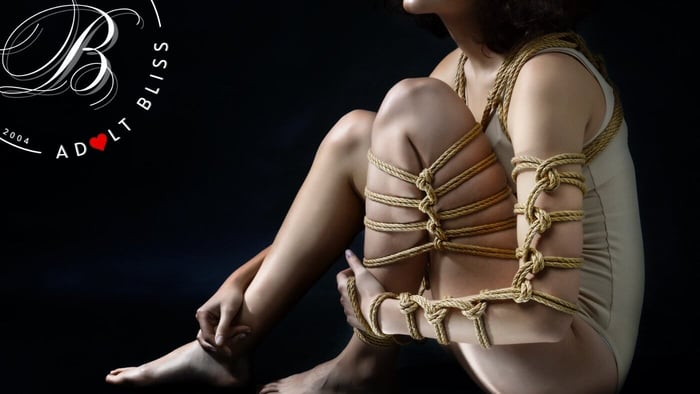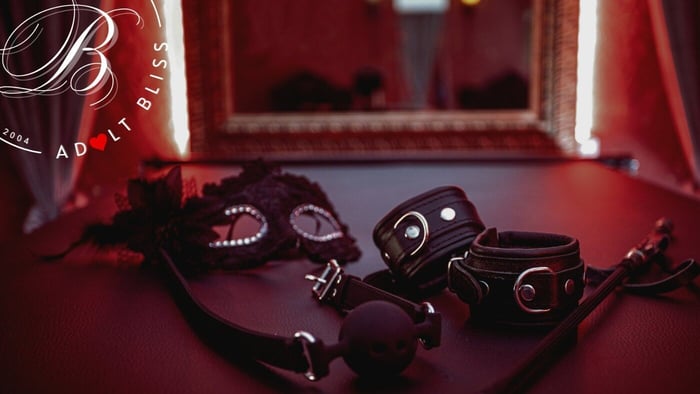
What Is Shibari? A Quick Guide To Japanese Rope Bondage
Jump To Section
What Is Shibari? Everything You Need to Start Japanese Rope Bondage
Shibari, the Japanese art of rope bondage, is far more than just tying someone up—it's a delicate and deliberate practice rooted in history, culture, and emotional connection. Shibari literally means "to tie" in Japanese, but in the context of BDSM and erotic art, it refers to a sensual, aesthetically driven form of bondage that celebrates vulnerability, trust, and intimate power exchange.
Bliss Jute Shibari Rope 6mm x 50m

$59.95
50 Metres of 6mm Jute Rope – Adult Bliss Signature Shibari Rope Looking for Bulk Shibari Jute Rope in Adelaide? Unleash your creativity with Adult...… read more
A Brief History of Shibari
The origins of Shibari can be traced back to Hojo-jutsu, a martial art used by Samurai in the 1400s to restrain prisoners. These weren’t just practical knots; they were symbolic—patterns and positions were chosen to reflect the prisoner’s social status and the severity of their crime. In time, these techniques evolved into Kinbaku, which translates to "the beauty of tight binding."
In the late 19th and early 20th centuries, Kinbaku began to take on erotic elements, focusing more on aesthetic expression and sensation play. Today, in Western circles, Kinbaku is often referred to as Shibari, and it’s become a well-loved practice within both the BDSM and art communities.
The Philosophy and Pleasure of Rope Bondage
Shibari isn’t just about restraint—it’s about contrast and connection. The practice blends elements of control and surrender, tension and release, structure and vulnerability. Intricate geometric rope patterns follow the natural lines of the body, highlighting curves and creating stunning visual contrasts between rough rope and soft skin.
Done correctly, Shibari can lead to powerful experiences for both partners. The person being tied (the bottom or bunny) may enter a subspace or trance-like state, while the rigger (the person doing the tying) often experiences a deep sense of focus, care, and control. This emotional intensity can result in heightened intimacy and trust between participants.
Bliss Jute Shibari Rope 6mm x 8m

$14.95
8 Metres of 6mm Jute Rope – Adult Bliss Signature Shibari Rope Unleash your creativity with Adult Bliss’s signature 8 metres of 6mm jute rope,...… read more
How to Get Started with Shibari
Step One: Choose Your Rope
If you’re new to rope bondage, start with natural hemp or jute rope. These traditional fibres are strong, lightweight, and offer just enough texture to grip the skin without slipping. While they may be a little rough at first, they soften over time with use.
Hemp rope is slightly more flexible and beginner-friendly.
Jute rope is crisper, holds knots well, and is preferred for more advanced work like suspension.
Avoid synthetic ropes, as they can be too slippery or stretchy, making them difficult to tie safely and securely.
Learn from the Experts
There are countless tying techniques in Shibari—from simple cuffs to full-body harnesses and elaborate suspension rigs. To avoid confusion (and injury), it's best to learn from qualified instructors. Online resources are great, but nothing beats hands-on experience.
In South Australia:
We highly recommend Shibari Adelaide, who run regular classes for all skill levels. Their sessions are welcoming, professional, and geared towards safety, consent, and creativity. Beginners are especially encouraged to come along and build confidence in a supportive environment.
Helpful Resource:
Two Knotty Boys: Showing You the Ropes — This book is an excellent starting point for rope newbies, with detailed images and beginner-friendly tutorials.
Safety First: Shibari Is Beautiful—but It Can Be Dangerous
Accidents can and do happen when playing with rope bondage. A misplaced knot or loss of circulation can cause long-term damage. That's why safety must always come first.
Basic Safety Tips:
Communication is essential: Always negotiate boundaries, safe words, and aftercare needs.
Use safety shears: Keep a pair nearby to cut the rope quickly in case of emergency.
Avoid tying over joints or nerves: Especially around the neck, inner arms, or thighs.
Check circulation frequently: Numbness, tingling, or discolouration are warning signs.
Find a mentor, attend a class, or practice on yourself before attempting ties on others. Respect the art form—and your partner—by learning properly.
Final Thoughts: Shibari as a Journey
The beauty of Shibari lies in the process, not just the outcome. Every knot, every breath, every moment of tension and release is an opportunity for deeper connection. Whether you're drawn to the artistic aesthetics, the erotic thrill, or the emotional intimacy, Shibari offers a unique path into the world of mindful BDSM.
Start slow. Learn the basics. Respect the rope. And above all—communicate.
FAQs
What’s the difference between Shibari and Kinbaku?
Kinbaku refers more specifically to the erotic art of Japanese rope bondage, while Shibari simply means “to tie.” In the West, the terms are often used interchangeably.
What kind of rope is best for beginners?
Natural hemp or jute rope is best. Avoid synthetic rope as it’s more difficult to tie securely and can cause injury.
Can I learn Shibari online?
You can learn some basics online, but in-person classes or mentorships offer safer, faster, and more informed learning.
Is Shibari safe?
Shibari is safe when practiced responsibly. Learn proper technique, never tie too tight, and always have scissors handy. Communication and consent are key.
Where can I learn in South Australia?
Shibari Adelaide offers regular beginner and advanced classes and is known for being inclusive, skilled, and welcoming to newcomers.











